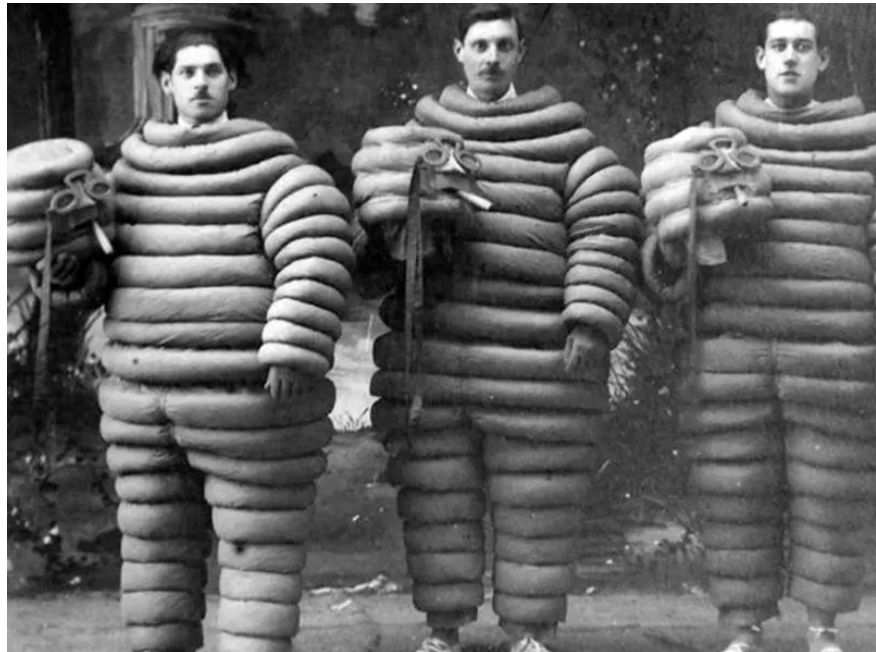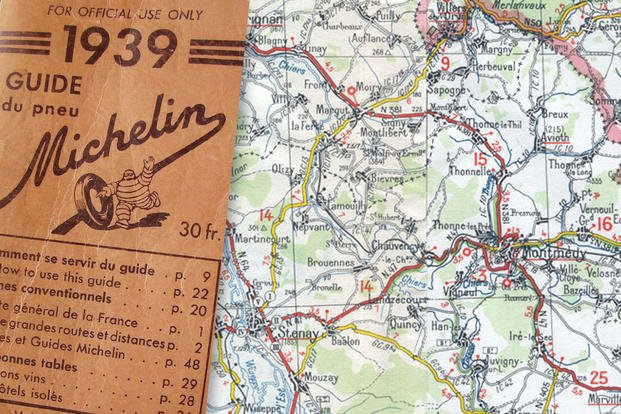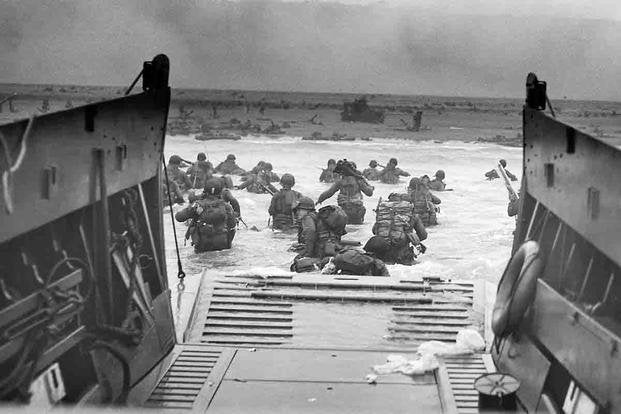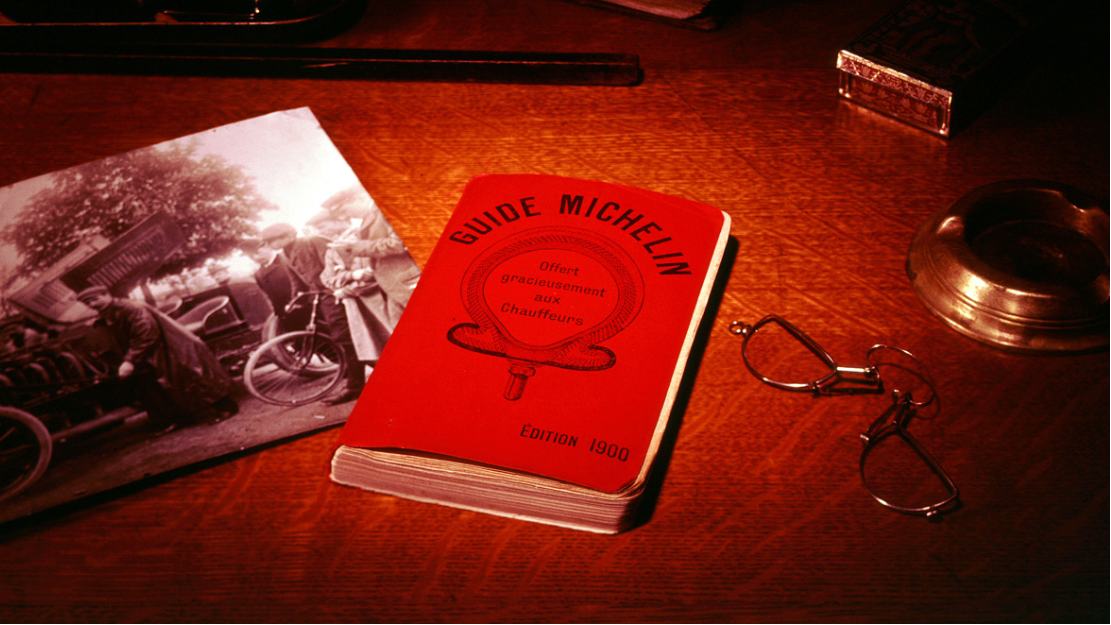Long before the mechanized assembly line and the Ford Model T came into existence, Michelin began rating fine dining establishments, not to sell food, but to sell tires.
The Michelin Company, founded by brothers André and Édouard, began publishing their restaurant guide in 1889 from their headquarters in the small French village of Clermont-Ferrand. The guide was only one part of the innovative brother’s marketing strategy, in 1894, the company also developed one of the first animated mascot and spokesmen, the Michelin Man.

When the first Michelin Guide, or “little red book,” first appeared on news stands, there were less than 3,000 cars on the roadways in France and the guide largely stuck to eateries in Paris, Cherbourg and established destination cities.
The Citroëns of the 1960s aside, the French have never been known for automobile innovation, but they are serious about their food and the Michelin brothers came up with a unique winning idea that would prompt people to travel more and put wear on their tires, necessitating replacement. Since only the very wealthy owned automobiles at the time, Michelin created a star-rating system for fine dining establishments that catered to the distinguished palate.
Before long, the Michelin Guide became known as the “gold standard” for restaurant ratings in Europe, and eventually the guide made it across the pond to America.
According to Parker Wilks-Bryant of the Escoffier School of Culinary Arts, the idea worked so well that the brothers improved the standard of the ratings system, eliminated outside advertising, included finely detailed maps and added a list of hotels in Paris and other businesses that might give people a reason to drive.
Wilks-Bryant writes that Michelin would secretly visit restaurants multiple times rating the overall food quality, mastery of flavor-pairing techniques, consistency between visits, value for the menu cost and even the impact of the personality of the chef on the dining experience.

Only war could interfere with the publication and its success as Michelin was forced to suspend the publication during both world wars; but during World War II, it became a valuable resource for the Allies.
By the time D-Day rolled around in June of 1944, Hitler had become desperate and the German Army was instructed to destroy bridges, railways and airfields in the wake of their retreat and they plucked up and destroyed every road sign from St. Lo to the Rhine in a last ditch effort to confuse the enemy.

However, the Allies beat Hitler to the punch. According to the U.S. Army website, the Army brass asked the French government in exile to aid them by having copies of the 1939 Michelin Guide republished and the up-to-date maps included in the publication became invaluable to the D-Day invaders.
After the war concluded and America began building its interstate highway system, Michelin added more cost efficient restaurants to its listings so that the guide included more restaurants the average family could afford. In the 1950s, it was common for dad to make sure there was an updated guide in the glovebox of the Desoto before heading out to the beach or the mountains.
The decision to have the guide take notice of more than the most high-end of luxury dining served only to increase it’s profile as part of the cultural fabric. The guide transitioned to be less than a tool to sell tires and into more of a prestigious feather-in-the-cap for restaurants and cities that are included.
It can be devastating for prominent chefs to lose stars. According to Chow Hound, outspoken TV chef Gordon Ramsay once amassed a total of 17 stars between his restaurants, but was said to be incensed to find out his Manhattan eatery, The London, lost two stars in a single year.
The folks at Michelin, however, would not bend to the famous chef’s likely obscenity-laden protestations, stating, with pure French condescension, that the quality of the restaurant had suffered and they adjusted the stars accordingly.
Ramsay ended up selling his interest in the restaurant.

The Michelin Guide remains at the top of the heap of companies producing travel guides as others, such as AAA, have gotten into the act with its own comprehensive online guidebook. This has led to rumor and criticism that, at times, Michelin has been “bribed” by cities and states to rate restaurants in their areas and enhance the destination profile of the city and land them “on the Michelin Map.
Las Vegas based food snob John A. Curtas whined that the California Tourism Board paid Michelin to rate restaurants in the state and wondered about how “thorough” the ratings would be even though they were not asked to review any particular establishment.
“More likely, Michelin will do there what it did here (Las Vegas): survey the landscape, find who the big players are, and ‘rate them’ according to hearsay,” Curtas wrote.
According to Yelp, there are four Augusta restaurants that claim to have earned Michelin stars; however, the publication does not have a dedicated space in its guide focusing on Augusta. Those local restaurants blessed with a star are: The Chop House, Apizza Di Napoli, Abel Brown Southern Kitchen & Oyster Bar and
Cork And Flame.
See you on the roadways!!
Scott Hudson is the Senior Investigative Reporter, Editorial Page Editor and weekly columnist for The Augusta Press. Reach him at scott@theaugustapress.com











